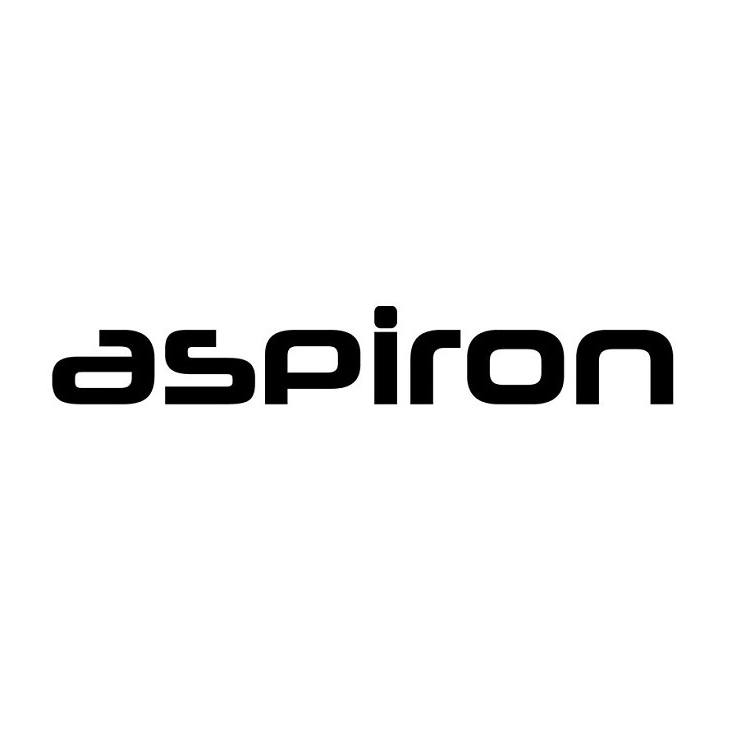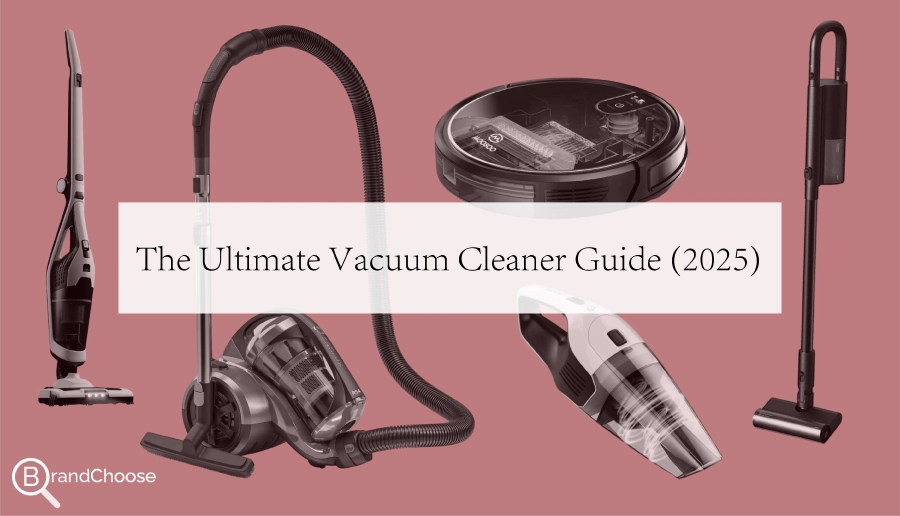Top Vacuum Cleaners Brands Based In france Brands
Here's what we recommend for:
Affordability
4.3/5
One of the standout features of Aspiron vacuums is their affordability. For a price significantly lower than premium models, you get solid suction power, reliable cleaning performance, and decent filtration. It’s a great option for budget-conscious consumers who still want a vacuum that can handle everyday messes.
Build Quality & Durability
3.7/5
Aspiron vacuums are built to last for the price range, offering reliable performance over time. The materials are durable, but since they are not as premium as higher-end brands, regular maintenance (like clearing the brush roll and replacing filters) will help maintain their longevity. Parts availability is decent, though not as robust as bigger brands.
Products Variety
3.8/5
Aspiron offers both cordless and corded stick vacuums, with handheld conversion options. Their 0.5L to 1L dustbin is designed for easy emptying, and the vacuums are generally lightweight, making them perfect for quick cleanups and small to medium spaces. The dustbin size is on the smaller side, so frequent emptying is necessary during larger cleaning sessions.
Usability & Maintenance
4.1/5
Aspiron vacuums are lightweight and maneuverable, making them ideal for homes with tight spaces. They are also quieter than many mid-range models, providing a more pleasant cleaning experience. Maintenance is simple, with easy-to-empty bins and washable filters. The vacuums are designed for convenience, offering minimal hassle with regular cleaning.

Tangle-Free Brush Rolls – Prevents pet hair wrap.

High-Efficiency Brushless Motor – Offers superior suction power while reducing wear and tear.

Bagless Design – Saves money on replacements.

Low Noise Technology – Designed for quieter operation.

Washable Filters – Easy to clean and maintain, improving long-term performance.

HEPA-H10 Filter – Traps 99.9% of airborne particles, down to 0.3 microns.
All Vacuum Cleaners Brands

The Only Vacuum Cleaner Guide You’ll Need in 2025

Introduction: Why Choosing the Right Vacuum Matters
Choosing the right vacuum cleaner might seem like a small detail—until you're stuck wrestling with a clunky machine that barely picks up anything. Whether you live in a pet-filled household or a sleek city apartment, the vacuum you use can have a major impact on your comfort, air quality, and time spent cleaning.
This vacuum cleaner buying guide for 2025 breaks it all down. From the core mechanics of how vacuum cleaners work to the latest features and types, you’ll come away with a crystal-clear understanding of what works best for your needs.
How Do Vacuum Cleaners Work? (A Quick Explainer)
At the heart of every vacuum cleaner is a simple idea: create suction that pulls in dirt, dust, and debris. Here's what makes that happen:
Motor: Generates the power needed to suck in air.
Fan: Spins at high speeds to create airflow.
Filtration system: Traps dirt and allergens before the air is released back.
Dust collection: Stored in a bag or dustbin, depending on the design.
Some use cyclonic action to spin air rapidly and separate dirt without clogging filters. Others rely on high-efficiency bags or washable filters. This is the basic principle behind most modern vacuum cleaner systems.
Vacuum Cleaner Types Explained
Understanding the different types of vacuum cleaners helps you choose the best vacuum for your lifestyle. Here's a breakdown:
![]()
Upright Vacuums
Popular in the U.S., upright vacuums are all-in-one machines ideal for carpet-heavy homes. Most offer height adjustment for transitioning to hard floors.
• Best for: Large spaces, deep carpet cleaning.
Canister Vacuums
The separate canister and wand design offers more flexibility and quieter performance. Great for hard floors and tight spaces.
• Best for: Mixed flooring, stairs, and furniture.
Stick Vacuums (Corded & Cordless)
Slim and lightweight, stick vacs are often cordless with rechargeable batteries. Newer models rival upright power.
• Best for: Quick daily cleaning, smaller homes.
Robotic Vacuums
Set it and forget it—robot vacuums navigate and clean on their own. Some maps your home and auto-adjust suction.
• Best for: Busy people, regular light cleaning.
Handheld Vacuums
Compact and portable, handhelds are ideal for cars, upholstery, and tight corners.
• Best for: Spot cleaning, furniture, vehicles.
Wet/Dry Vacuums
Designed for garages, basements, or workshops. Can handle water, large debris, and even nails.
• Best for: Heavy-duty cleanup.
Central Vacuum Systems
Built into walls with outlets in each room, central vacuums are powerful and quiet.
• Best for: Large homes, long-term investment.
Key Features & Technologies You Should Know
Before buying a vacuum cleaner, you should understand the core features and technologies:
Suction Power: Measured in air watts or kPa. More isn't always better—efficiency matters.
Filtration Systems: HEPA filters trap 99.97% of dust and allergens. Multi-stage or carbon filters reduce odors.
Brush Rolls: Motorized heads are better for carpets. Tangle-free designs help with pet hair.
Smart Tech: Some vacuums connect to apps, have voice control, or self-empty.
Corded vs. Cordless: Cordless vacuums offer convenience, but runtime and charging speed vary.
Noise Levels: Quieter models operate around 60–70 dB.
Bagged vs. Bagless: Bags are more hygienic. Bagless saves cost but may require more maintenance.
Attachments: Look for pet tools, crevice tools, mattress heads, and extension wands.
Matching the Vacuum to Your Needs
This vacuum cleaner buying guide helps you find the right vacuum for your specific needs:
Small Apartments: Go cordless or robotic for easy storage and maintenance.
Large Homes: Upright or canister vacuums with longer cords and stronger suction.
Pet Owners: Prioritize strong suction, anti-tangle brush rolls, and HEPA filters.
Allergy Sufferers: Go for sealed systems with certified HEPA filtration.
Elderly Users: Lightweight stick or robot vacuums for ease.
Busy Lifestyles: App-controlled or self-emptying robot vacs save time.
How Much Should You Spend? (And What You Get at Each Price)
Looking for the best vacuum cleaner within your budget? Here's a quick breakdown:
Budget ($50–$150): Basic upright or stick models with minimal features.
Mid-Range ($150–$400): Better suction, filtration, and versatility.
Premium ($400+): Smart features, superior build, advanced filtration, quieter operation.
General Buying Tips
When shopping for the best vacuum cleaner, keep these tips in mind:
– Test maneuverability if you can.
– Check replacement parts & filter costs.
– Read user reviews—not just star ratings.
– Check return policies & warranty terms.
– Don’t overpay for features you won’t use.
Most Reliable Brands (2025 Edition)
While this guide focuses on education, some of the best vacuum cleaner brands in 2025 include:
Miele – Known for longevity and suction power.
Dyson – Innovative, cordless tech and strong brand trust.
Shark – Affordable and feature-rich.
Tineco – Smart cordless solutions.
Kenmore – Solid performance at a good value.
FAQs
What type of vacuum is best for pet hair?
Vacuums with strong suction, anti-tangle brush rolls, and HEPA filters are ideal for pet hair. Stick vacs and uprights with specialized pet tools are top choices.
Are bagged or bagless vacuums better?
Bagged vacuums are more hygienic and better for allergy sufferers. Bagless vacuums are more cost-effective and easier to empty, but may require more cleaning.
What does HEPA mean in a vacuum cleaner?
HEPA stands for High Efficiency Particulate Air, and it’s far from just a marketing buzzword — it’s a certified standard. For a filter to be officially labeled “True HEPA,” it must trap at least 99.97% of particles as small as 0.3 microns in diameter. That includes: dust, pollen, mold spores, pet dander, smoke particles, and even some bacteria.
HEPA was originally developed by the U.S. Department of Energy and remains one of the most trusted standards in air filtration.
Final Thoughts
A vacuum isn’t just a cleaning tool—it’s a daily companion that keeps your space livable. Whether you need power, convenience, or allergy control, the right vacuum cleaner will feel like it was made just for you. Use this 2025 vacuum cleaner buying guide to shop smart and breathe easy.
Bookmark this guide, and share it with anyone who’s still stuck in the dust!
KEEP READING

















